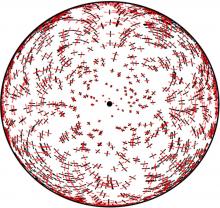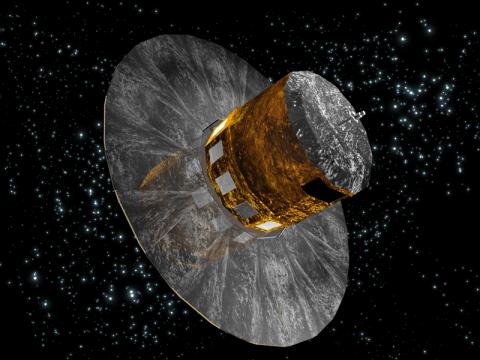The GAIA satellite
A group of Cambridge astronomers, including Anthony Lasenby from the Cavendish Astrophysics Group and Kavli Institute for Cosmology, have made the first investigation of the sensitivity of the GAIA satellite to ultra-low frequency gravitational waves produced by supermassive black hole binaries. (See Moore, Mihaylov, Lasenby & Gilmore, Phys. Rev. Lett. 119, 261102, 2017.)
The method is similar to that used in Pulsar Timing Arrays, except that instead of the gravitational wave modifying the apparent frequency of a pulsar, it modifies the apparent positions of stars observed by GAIA, making them oscillate with a characteristic pattern on the sky, An example of this is shown in the figure,

in which a gravitational wave is travelling from one pole of the celestial sphere, and the black and red lines indicate the induced apparent motions of the stars within a hemisphere (exaggerated by a large factor to make them visible), corresponding to the two possible polarisations of the wave. Using a method which allows the information in the star motions to be compressed by a factor of 10^6, the study shows that it will be possible to search for individually resolvable waves within the full GAIA data set of many billions of stars, and that the sensitivity of GAIA could be comparable to that of current or near-future pulsar timing arrays over a slightly wider frequency band.
The paper was selected as the cover article for a recent issue of Physical Review Letters, and is accompanied by an Editor's Choice Focus article.
See
https://journals.aps.org/prl/abstract/10.1103/PhysRevLett.119.261102
and


